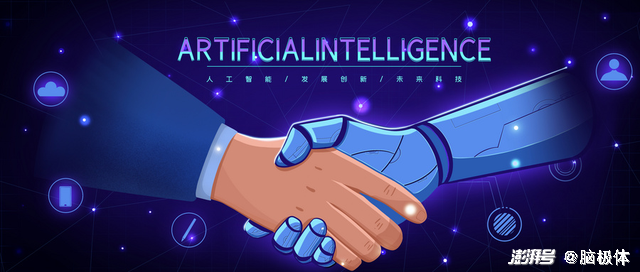Have you ever encountered this kind of special take-out or express delivery, which can only be delivered by SMS instead of telephone reminder? At this time, if short messages are ignored, the problem of language communication appears.
"Why don’t you answer the phone?" "Why did you put the courier at the post office without my permission?" These problems can be easily explained to the listener, but the deaf workers can’t hear the customer’s demand for telephone transmission, which leads to misunderstanding between the two sides.

Deaf people are even more vulnerable when they encounter the urgent need for defense or legal proceedings, which emphasize the rigor of communication. On these occasions, if the deaf use written expression, it will not only reduce efficiency, but also bring more twists and turns because of inaccurate translation. Whether deaf people with litigation needs can express their wishes in sign language and be accurately understood will directly affect the result of safeguarding their own rights and interests.
According to the second sampling survey of disabled people, the number of hearing impaired people in China is close to 30 million, which is the largest disabled group in China. Among them, the total number of hearing-impaired children is more than 4.6 million, and the number of hearing-impaired children under 7 years old is 800,000, and more than 20,000-30,000 hearing-impaired newborns are added every year. For such a huge crowd, sign language is their "window" to communicate with the world, but the way to learn sign language seems to be not so simple and smooth.
Communication barriers of millions of hearing-impaired people
In the news broadcast, we have all seen this scene, the sign language host in the lower left corner of the TV screen, and their skillful gestures of flying up and down are as beautiful as dancing. However, according to the cross-regional survey of nearly 10,000 deaf people conducted by Beijing Normal University in 2012, only 8% of the deaf can understand the sign language news of many TV stations, 56% of the deaf can understand some, and 29% of the deaf can hardly understand it.
CCTV anchor’s Mandarin can be understood by people who speak various dialects in the north and south, but a small number of deaf people can’t understand CCTV’s sign language anchor gestures. This problem is a persistent challenge in sign language learning and education.
1. Sign language standards are not uniform. Sign language is different from national sign language and natural sign language, which is similar to Mandarin and dialects of Chinese. Besides, national sign language is not as popular as Mandarin in China, but only appears in news, conference translation and school teaching. Most deaf people use natural sign language. However, there are great differences between national sign language and natural sign language, and between different regions, which leads to poor communication between deaf people and deaf people, and between deaf people and listeners.

2. Teachers are relatively lacking. Sign language teachers in special schools are mostly listeners from special education background. For the growing deaf population, the teachers are generally nervous. In addition, teachers in special education schools play the national standard sign language, not the natural sign language that students are used to since childhood, so the efficiency of sign language teaching is affected to some extent.
3. Lack of sign language vocabulary. At present, there are about 8,000 words in sign language, which can meet daily study and communication, but it is difficult to cover all scenes. For example, some professional words such as "artificial intelligence" or new words such as "meta-universe" are difficult to fully express in sign language, and only compound words can be combined word by word in the form of synonyms, which makes it difficult for deaf people to easily understand the meaning of the combined words. In addition, there is no universal sign language grammar standard in sign language teaching, which also makes it difficult to learn and use sign language.
These obstacles and high learning costs in sign language communication make the communication between deaf people and the outside world seem to be separated by a huge transparent shell, which makes it difficult for outsiders to get in and people inside to get out.
How to make deaf people learn sign language efficiently, realize smooth communication and shorten the "time difference" of information exchange has become the direction of many technology companies. More and more enterprises have begun to use the power of AI technology to spread the "seeds" of digital inclusion to this vast land.
Intelligent "Soul" of Sign Language Learning —— Ascending and Thinking MindSpore AI Framework
Qianbo Information, based on Huawei Ascension AI and Ascension MindSpore AI framework, has built an all-in-one machine for sign language teaching and examination by using Zidong Taisan modal model of Institute of Automation, Chinese Academy of Sciences, which is specially used to help students with hearing impairment learn, practice and take exams, and help improve the communication quality of deaf people.
So how did the framework of Ascension AI and Ascension MindSpore AI become the intelligent "soul" injected by the sign language teaching and examination machine?
1. The deployment of high-performance small models is the core ability to support the integrated teaching and examination machine. The large model of sign language is distilled by knowledge to form a usable small model with high performance, which is deployed on the sign language teaching and examination integrated machine equipped with Ascension AI chip to provide its core support.
2. Understanding and translation are more accurate with the ability to recognize pictures, expressions and lips. Based on the expression-driven and lip language calculation in the sign language model supported by Shengteng AI basic software and hardware platform, the sign language virtual human can express sign language by combining expression and lip language, making its translation more vivid and accurate and realizing graphic association.
3. Small sample learning to improve the intelligibility of sign language translation. In the limited corpus environment, small sample learning in sign language model can improve the intelligibility of sign language translation and make the translation habits of sign language virtual people closer to the cognition of deaf people. At present, real-time sign language vocabulary recognition ability has been initially realized.
For hearing-impaired students, they can learn animated versions of gestures, expressions, lips and even more abstract concepts with the help of equipment; For teaching institutions, the sign language teaching and examination machine can realize the automatic teaching process such as learning, assessment, setting questions and comprehensive evaluation, reduce the basic teaching pressure of teachers, and release more humanistic care and innovative education ability.
The sign language teaching and examination machine can provide deaf people and sign language interpreters with the learning, training and examination ability of national standard sign language. Not only can deaf people communicate smoothly and enjoy social life and public services better, but also can help deaf people communicate with people who don’t know sign language, so that everyone can enjoy the convenience of digital intelligence life.
The infinite future of digital inclusion "seed"
We have all heard this saying: to test the civilization of modern society, it is never to see how prosperous the city is and how rich the culture is, but to see whether the society pays attention to and takes care of a few vulnerable groups. With the development of artificial intelligence, the "fruit" of technology is benefiting the whole society. Under the public welfare advocacy of digital inclusion, pursuing humanistic care and realizing social value has become the choice of more and more responsible enterprises.
Based on the results of the big model of Ascension AI and Ascension MindSpore AI, through the strong generalization ability of the big model, many enterprises in the industrial ecology are empowered to help the application blossom in the industry scene.
The sign language teaching and examination integrated machine launched by Qianbo Information is one of the typical applications of industrial model landing. In addition to caring for special groups, AI can not only help people with disabilities in the field of public welfare, but also make a difference in short-term weather prediction. Short-term and imminent weather forecasting is closely related to daily life. With global warming and frequent meteorological disasters, timely and accurate forecasting can effectively guide disaster prevention and mitigation. The short-term and imminent weather prediction model created by Huawei in cooperation with Plateau Institute and University of Electronic Science and Technology can improve the accuracy of short-term and imminent weather prediction to reduce life and health and property losses, which will bring great economic, social and ecological value.
In academic circles, large-scale model innovations emerge one after another, but few really go to large-scale industrial deployment, and there are breakpoints in scientific research innovation and industrial application.
Huawei opened up Industry-University-Research, and jointly established an industrial alliance platform around the big model with scientific research institutes and enterprises, so as to promote all kinds of enterprises in the industry to incubate industrial applications based on the big model, so that the big model can truly empower the industry, realize industrial agglomeration and create greater value.

We can see that the large model based on the framework of Shengteng AI and Shengsi MindSpore AI has landed in the industry, which not only empowers traditional industries to improve quality and efficiency, but also benefits the social welfare field. The two cases in this paper are just the "tip of the iceberg" of the industrialization of large models, but they show us that Huawei practices different slices of digital inclusion.
Let life have more temperature, and technology has never stopped exploring. Huawei continues to gather industrial potential, improve people’s livelihood through science and technology, and make the cross-border connection between technology and public welfare closer and closer. The power of science and technology is breaking the "isolated island" of the past human environment and making the society warmer. In the future, the "seeds" of digital inclusion will gradually increase and drift further. As these "seeds" become forests, we will be closer and closer to a happier intelligent life.
关于作者